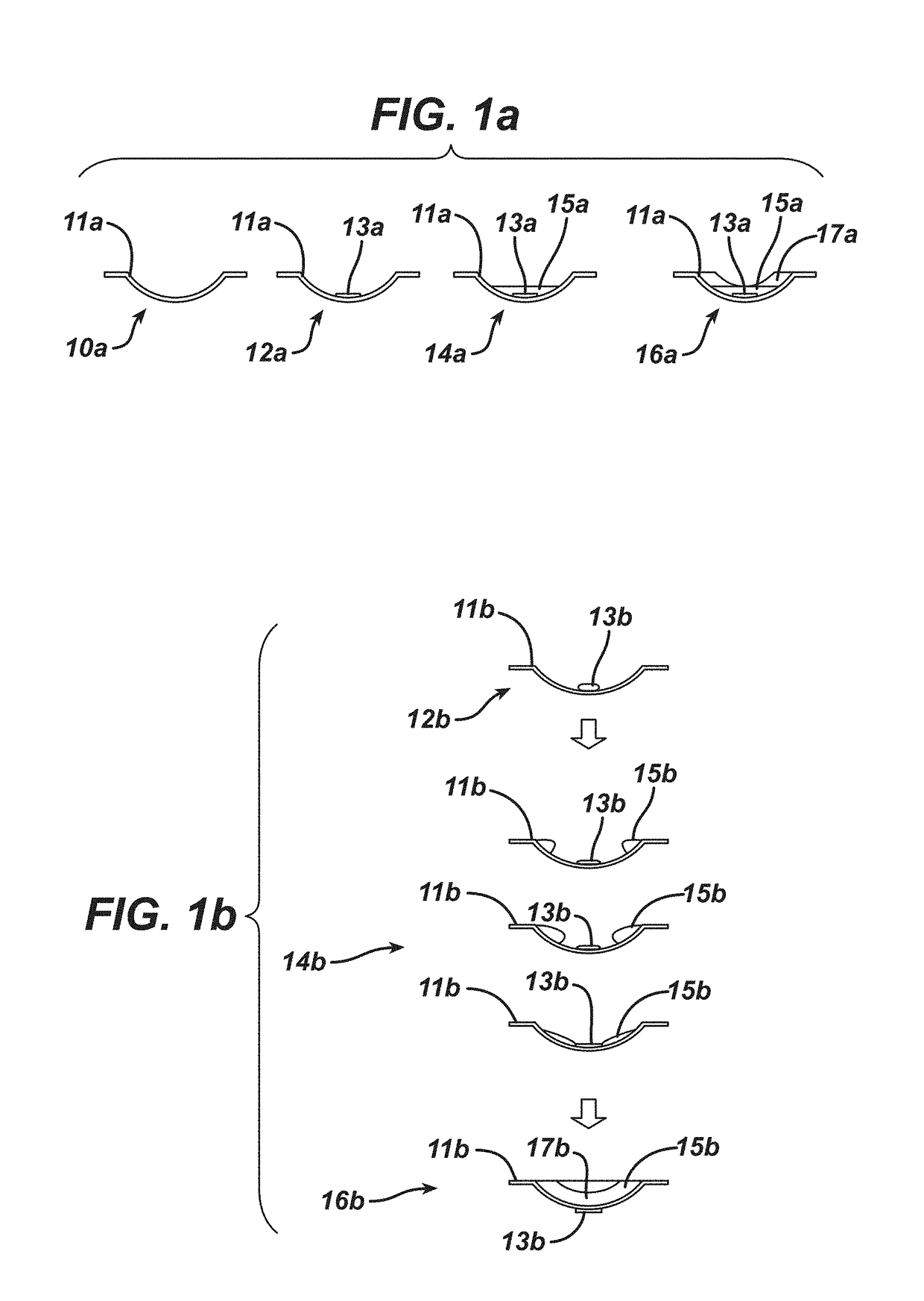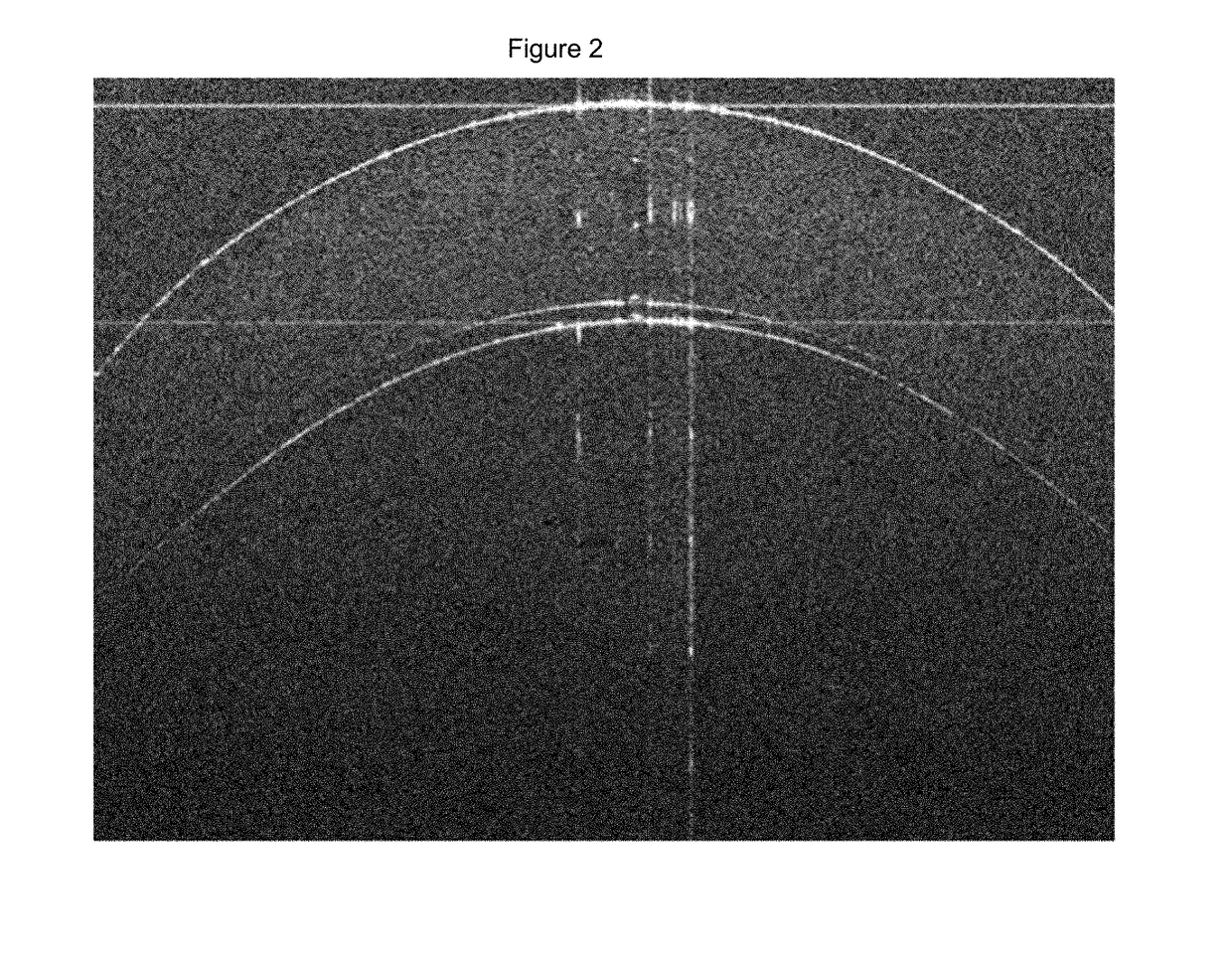Increased stiffness center optic in soft contact lenses for astigmatism correction
a soft contact lens and center optic technology, applied in the field of contact lenses, can solve the problems of individual's vision blurring, optical or refractive defect, general hyperopia, etc., and achieve the effect of increasing the stiffness of the optic zone, and increasing the young
- Summary
- Abstract
- Description
- Claims
- Application Information
AI Technical Summary
Benefits of technology
Problems solved by technology
Method used
Image
Examples
examples 1-10
[0276]Each reactive mixture was formed by mixing the reactive components listed in Table 1, filtering through a 3 μm filter using a heated or unheated stainless steel or glass syringe, and then degassed by applying vacuum at ambient temperature for about 15 minutes. In a glove box with a nitrogen gas atmosphere and less than 0.1 percent oxygen gas, 75-100 μL of the reactive mixture was then dosed at room temperature into the FC. The BC was then placed on the front curve mold. The molds were equilibrated for a minimum of twelve hours in the glove box prior to dosing. The tray was transferred into an adjacent glove box maintained at 60-65° C., and the lenses were cured from the top for 20 minutes using TLO3 fluorescent bulbs having intensity of 4-5 mW / cm2. The light source was about six inches above the trays. A detailed description of the curing process and apparatus can be found in U.S. Pat. No. 8,937,110.
[0277]The lenses were manually de-molded with most lenses adhering to the FC a...
examples 11-22
[0280]Each reactive mixture was formed by mixing the reactive components listed in Tables 3 and 4 and then degassed by applying vacuum at ambient temperature for about 20 minutes. In a glove box with a nitrogen gas atmosphere and less than 0.1 percent oxygen gas, about 100 μL of the reactive mixture was then dosed at room temperature into the FC made from made from the materials shown in Tables 3 and 4. The BC made from the materials shown in Tables 3 and 4 was then placed on the front curve mold. A quartz plate was placed on top of a tray of eight such mold assemblies to maintain proper fitting. The molds were equilibrated for a minimum of twelve hours in the glove box prior to dosing. The tray was transferred into an adjacent glove box maintained at 60-65° C., and the lenses were cured for 12 minutes from the top using TLO3 fluorescent bulbs having intensity of 4-5 mW / cm2.
[0281]The lenses were manually de-molded with most lenses adhering to the BC and released using 40% IPA, follo...
examples 23-32
[0286]Each reactive mixture was formed by mixing the reactive components listed in Table 6 and then degassed by applying vacuum at ambient temperature for about 20 minutes. In a glove box with a nitrogen gas atmosphere and less than 0.1 percent oxygen gas, about 100 μL of the reactive mixture was then dosed at room temperature into the FC made from Zeonor. The BC made from 55:45 (w / w) blend of Zeonor:polypropylene was then placed on the front curve mold. The molds were equilibrated for a minimum of twelve hours in the glove box prior to dosing. The tray was transferred into an adjacent glove box maintained at 60-65° C., and the lenses were cured from the top for 20 minutes using 420 nm LED lights having intensity of 4-5 mW / cm2.
[0287]The lenses were manually de-molded with most lenses adhering to the BC and released using 40% IPA overnight, followed by washing with 40% IPA 0.5 to 1 hour, two times with DI water for about 0.5 to 1 hour, and finally two times with borate buffered packa...
PUM
| Property | Measurement | Unit |
|---|---|---|
| Young's modulus | aaaaa | aaaaa |
| water content | aaaaa | aaaaa |
| wt % | aaaaa | aaaaa |
Abstract
Description
Claims
Application Information
 Login to View More
Login to View More - R&D
- Intellectual Property
- Life Sciences
- Materials
- Tech Scout
- Unparalleled Data Quality
- Higher Quality Content
- 60% Fewer Hallucinations
Browse by: Latest US Patents, China's latest patents, Technical Efficacy Thesaurus, Application Domain, Technology Topic, Popular Technical Reports.
© 2025 PatSnap. All rights reserved.Legal|Privacy policy|Modern Slavery Act Transparency Statement|Sitemap|About US| Contact US: help@patsnap.com



